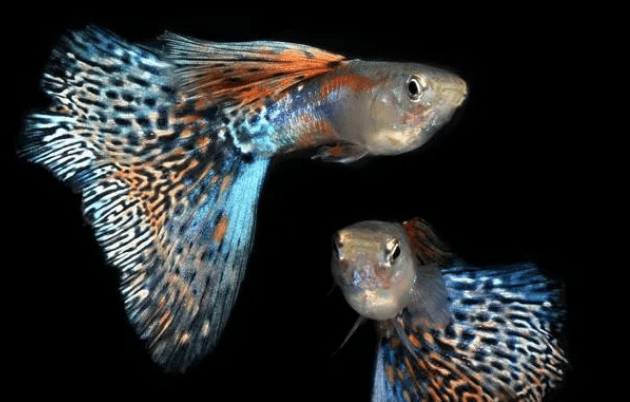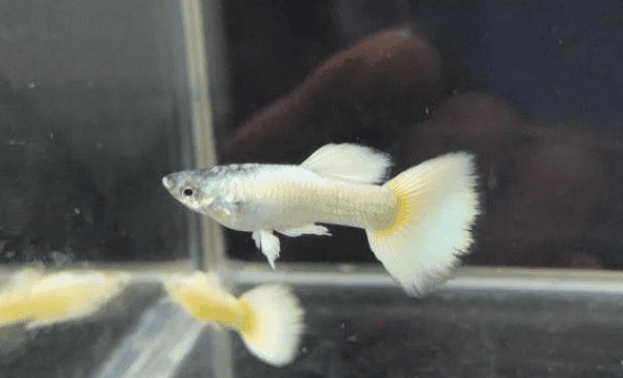Guppy is a tropical freshwater fish with bright colors and great ornamental value. Guppies are popular around the world due to their unique beauty and ease of keeping. However, many breeders will encounter a problem during the breeding process: how to accurately distinguish male and female guppies? This article will unveil the mystery of guppy gender for you.

1. Observe the appearance characteristics
First of all, We can initially determine the gender of a guppy by observing its appearance. Male guppies usually have more brilliant and diverse colors, especially the tail fin, which tends to have more complex colors and patterns. In addition, male guppies may also have more developed dorsal and anal fins than females. In contrast, female guppies may have drab colors and shorter fins.
2. Observe behavioral habits
In addition to appearance characteristics, the behavioral habits of guppies can also provide us with clues to gender identification. Male guppies can become very territorial during courtship, carving out areas of influence in the aquarium and trying to drive away other males. Additionally, male guppies display their colorful tail fins to attract females. In contrast, female guppies have a gentler behavior and tend to avoid fights and focus more on foraging and caring for their offspring.
3. Observe the reproductive organs
To accurately determine the gender of a guppy, the most direct way is to observe its reproductive organs. The distance between the anus and the cloaca of male guppies is longer and the cloaca is smaller; while the distance between the anus and the cloaca of female guppies is shorter and the cloaca is larger. This feature is particularly evident in adult guppies. However, it is important to note that this feature may be less obvious during the non-breeding season or during the juvenile stage.
4. Use professional identification methods
If the above methods still cannot determine the gender of the guppy, we can consider using professional identification methods. For example, you can tell the sex of a guppy by looking at the number and size of spots on its gill cover with a magnifying glass. Male guppies have more numerous and larger spots, while the opposite is true for females. In addition, we can also use DNA testing technology to identify the gender of guppies. This method is extremely accurate, but the cost is relatively high.
5. Summary
Through the above four methods, we can more accurately distinguish the male and female guppies. First observe the appearance characteristics and behavioral habits, and then make a judgment based on the observation of reproductive organs and professional identification methods. It should be noted that during the breeding process, the water quality must be kept clean and stable and sufficient feed and space must be provided to ensure the healthy growth of guppies.
The Wonderful World of Guppies: Exploring the Living Habits and Reproduction Methods of Tropical Fish
Guppies are fish of the genus Medaka in the family Medakaidae. Guppies have a slender body, and their morphological changes are mainly in the tail fin. Common tail fin shapes include round tail, pointed tail, shovel tail, etc. There are obvious differences between male and female fish. The size of the male fish is only about half that of the female fish. The anal fin of the female fish is "fan-shaped". The anal fin of the male fish is "stick-shaped". The body color of the male fish is rich and colorful, and the shape of the tail is various [24]. Because its tail resembles a peacock's tail, it is called "guppy".
Guppies are one of the popular aquarium ornamental fish and are commercially bred in large numbers. People have bred varieties with different colors and fin shapes. These artificially cultivated fish species require higher water temperatures than their wild counterparts. Wild guppies have a plain appearance in comparison, but because of their rarity, they are highly sought after by dedicated tropical ornamental fish enthusiasts.
Today, let us enter the wonderful world of guppies and learn about their living habits and reproduction methods.
First, let’s take a look at the living habits of guppies. Guppies are tropical fish, and the most suitable breeding temperature is 22 to 24 degrees. Within this temperature range, guppies live in the best condition, with moderate food intake and strong resistance. However, guppies can also survive in low temperature environments of 16 degrees, but in low temperature environments, their food intake will decrease and they are prone to illness or even death. Therefore, when raising guppies, it is necessary to keep the water temperature stable and avoid sudden highs and lows. In addition, when changing the water for guppies, you should also pay attention not to make the temperature difference too large to avoid unnecessary harm to the guppies.
Guppies reproduce very quickly and will reproduce quickly as long as the temperature is right. After the new fish arrives home, we need to first allow the water temperature in the bag to equalize with the water temperature in the fish tank. This process is called "contrast temperature". After warming, we can pick up the fish, but do not pour the water in the bag into the tank, because the water in the bag may contain germs. 1-2 days before changing the water, we also need to fill a bucket with tap water to allow the chlorine in the water to evaporate. Chlorine is very toxic to fish. When changing the water, we need to use the temperature to measure the temperature in the fish tank, and then use boiling water to adjust the temperature of the tap water to make it consistent with the water temperature in the fish tank. This will ensure that the guppies will not be harmed during the water change.

Next, let's take a look at the reproduction method of guppies. Guppies are ovoviviparous fish, and the female can lay eggs once a month. After the female fish matures, she may lay dozens or even more than a hundred eggs each time. When she is about to give birth, the belly of the female fish will become very large and look like a "square belly" when viewed from the side. At this point, we can begin to isolate the female fish. Guppies may be eaten by adult fish or female fish after birth, so the newborn fish need to be isolated immediately. When the baby fish are 1-2 months old and the mother fish cannot eat them, they can be placed in the original tank and raised with their parents. For small fish, you can use feed specifically for small fish. When the red fish grow up, they can use Baoxianhong, which is a color-enhancing feed, which can make the red fish deep and bright in color.
Because of the beautiful appearance and elegant posture of guppies, they have attracted countless aquarium enthusiasts. People like to watch guppies dancing in the water and feel the visual feast they bring. At the same time, raising guppies can also bring people fun and companionship.

 扫一扫微信交流
扫一扫微信交流
发布评论